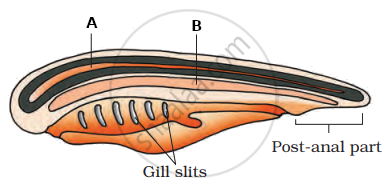Advertisements
Advertisements
Question
What are the modifications that are observed in birds that help them fly?
Solution
Birds have adapted to aerial mode of life through the following modifications:
- The body is sleek and has a spindle form to reduce wind resistance.
- Feathers cover the entire body. It lessens friction, stops heat loss, and aids in temperature stability.
- Wings are added to the forelimbs to aid with flight.
- The muscles used for flight are well developed.
- The majority of bones are hollow, pneumatic, and filled with air, which helps the body fly by making it lighter.
- Birds have a warm heart. Their body temperature stays between 40°C and 46°C. Flight requires this.
- The heart is four-chambered and functions efficiently with double circulation.
- There are air sacs that serve as an air reservoir and aid in controlling temperature.
- There is only one ovary and no urinary bladder (except for Rhea), which helps with weight loss, which is crucial for flying.
APPEARS IN
RELATED QUESTIONS
“All vertebrates are chordates but all chordates are not vertebrates.” Justify the statement.
How important is the presence of air bladder in Pisces?
Could the number of eggs or young ones produced by an oviparous and viviparous mother be equal? Why?
The limbless amphibian is ______.
Four chambered heart is present in ______.
Which of the following is not correctly paired?
Which of the following is an egg laying mammal?
List three features that characterise bony fishes.
Write the characteristics that contributes to the success of reptiles on land.
List the unique features of bird’s endoskeleton.
Which of the following is NOT a character of Chordata?
A and B are respectively represents?

Give the characteristic features of the following citing one example.
Urochordata and cephalochordata
Give three major differences between chordates and non-chordates and draw a schematic sketch of a chordate showing those features.
